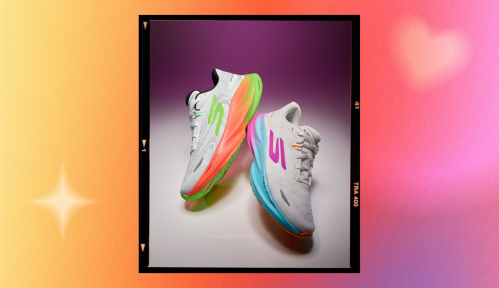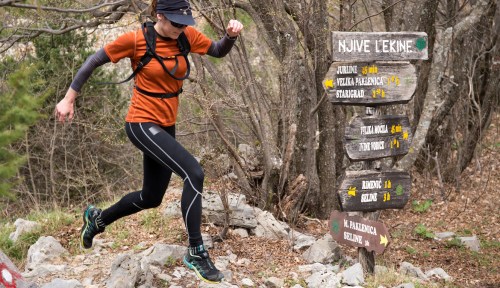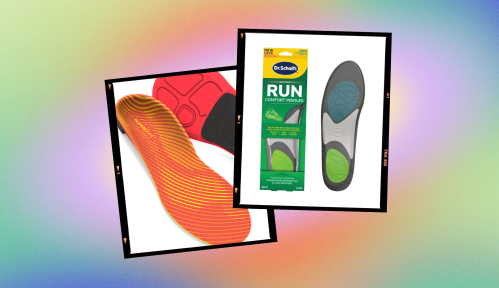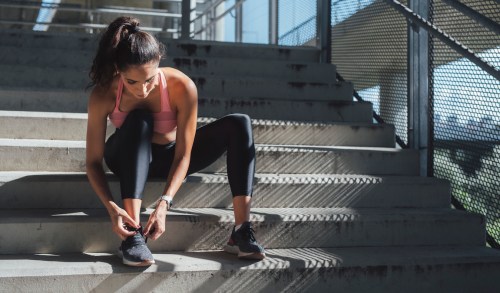Our editors independently select these products. Making a purchase through our links may earn Well+Good a commission
What To Look for in Walking vs. Running Shoes, According to Podiatrists
Experts explain the difference between walking vs. running shoes and share their top picks for each. From Hoka to Brooks, shop the list.
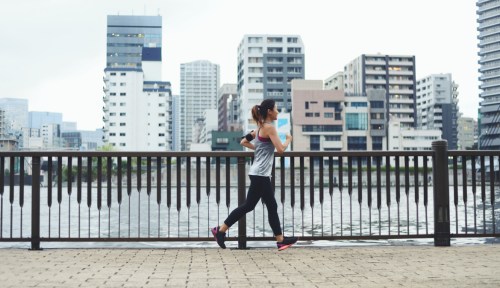
If you walk, run, or both, chances are you probably own separate shoes for these activities—and if you don’t, you might want to consider it. When it comes to walking vs.running shoes, each option has important differences despite having many of the same features, says Nelya Lobkova, DPM, board-certified podiatrist and founder of Step Up Footcare in New York City. The main differences lie in their weight, flexibility, and fit, she says, but she and Julie Schottenstein, DPM, FACFAS, FACPM, double board-certified podiatrist at The Schottenstein Center in Miami, Florida, point to other distinctions that might not be so obvious upon first glance.
Experts in This Article
double board-certified podiatrist at The Schottenstein Center in Miami
board-certified podiatrist and founder of Step Up Footcare in New York City
board-certified podiatric surgeon at North Park Podiatry in San Diego, California
Understanding these distinctions is important. As their names suggest, walking and running shoes serve different purposes, and you’ll want to wear them as intended. For one, it isn’t typically recommended that you wear walking shoes to run. Walking shoes may not offer adequate flexibility or cushioning for running, and they can also be cumbersome to wear when you want to stay light on your feet, says Dr. Schottenstein. On the other hand, running shoes, though more versatile, have a shorter lifespan than their counterpart and can lose their springiness over time. As such, Dr. Lobkova typically recommends that you limit the use of running shoes for activities other than running, as you’ll likely need to replace a given pair after approximately 500 miles.
By learning the qualities that differentiate walking and running shoes, you’ll also be better informed when it comes to selecting an ideal pair. To find out more, we spoke to Dr. Schottenstein and Dr. Lobkova, as well as to Trent Brookshier, DPM, board-certified podiatric surgeon at North Park Podiatry in San Diego, California.
Walking vs. running shoes: the main differences
- Cushioning: Walking and running shoes are both often designed with cushioning to pad your steps and reduce fatigue, but usually differ in terms of where support is provided in the shoe. According to Dr. Schottenstein, walking shoes often have more cushioning in the soles of the shoes to keep wearers comfortable over long distances, whereas running shoes provide more cushion in the heel and forefoot to absorb impact during runs.
- Flexibility: When it comes to flexibility, walking shoes are often more rigid than running shoes, particularly at the midsole, says Dr. Lobkova. “Walking shoes often offer more stability—and less flexibility—to provide support during walking,” echoes Dr. Schottenstein, whereas “running shoes are usually more flexible to accommodate the foot’s natural movement during the running gait.”
- Heel-to-toe drop: Walking and running shoes also differ when it comes to the heel-to-toe drop, or“the height difference between the heel and forefoot,” says Dr. Schottenstein. According toDr. Lobkova, “Typically, running shoes have a 10 to 13-millimeter heel-to-toe drop,” while walking shoes have a smaller heel-to-toe drop. She explains, “This is because the mechanics of walking do not require the heel to be as high during the contact phase of walking compared to running.”
- Weight: Walking shoes are also usually heavier than running shoes, which are “more lightweight for speed and recovery,” says Dr. Lobkova. Generally speaking, running shoes will weigh anywhere between 6.5 to 13 ounces, and on average, about 10 to 10.5 ounces. Conversely, walking shoes will weigh 17 ounces at minimum, she says.
- Variety of options: As you look at options on the market, you may often find a wider variety of choices when it comes to running shoes. “Whereas most walking shoes have one or two models in total, running shoes have a few models in each running shoe category,” says Dr. Lobkova.
What to look for when shopping for walking vs. running shoes
If you’re shopping for walking shoes, there are a few considerations to keep in mind. Firstly, walking shoes should provide sufficient arch support—and, ideally, will have removable insoles to accommodate your own inserts if needed, says Dr. Schottenstein. Additionally, “opt for walking shoes with ample cushioning throughout the sole to absorb impact and provide shock absorption,” she says. Dr. Lobkova adds, “A cushioned walking shoe creates a smoother transition of bodyweight from the heel to the toes during normal walking.” Also consider the heel-to-toe drop (aka the drop). She recommends a drop of 6 to 8 millimeters for walking.
And, while you can walk in any shoe, Dr. Lobkova highly recommends lightweight walking shoes with soles made from cushy foam if you’re walking long distances. If you are walking over rough off-road terrain, “consider hiking shoes,” she says. “These shoes need to have adequate ankle support, midsole, stability, and good traction in the sole for balance.”
Conversely, when shopping for running shoes, you’ll typically want to look for features like arch support and cushioning as you would when selecting an ideal pair for walking. However, you’ll typically want to choose a running shoe that provides ample flexibility, says Dr. Schottenstein. Specifically, “Flexibility in the toe area helps with running efficiently,” adds Dr. Lobkova.
Other things to consider
Width
Whether your foot is narrow or wide, opt for a shoe with a wide toe box. “This can help prevent a lot of issues like neuromas that can occur when the forefoot is compressed,” says Dr. Schottenstein. “Also, it will be able to accommodate bunions and hammertoes.”
Material
You’ll also want to consider material when shopping. “In a climate that is warm, the optimal walking shoe will have a mesh or breathable upper, whereas a wet and cold climate calls for a leather or Gore-Tex, weatherproof upper,” says Dr. Lobkova.
Foot type and body mass
There is no one walking or running shoe that is right for everyone, and more often than not, choosing your ideal option will depend on your unique needs, says Dr. Brookshier. He usually considers two factors—namely, foot type and body mass. Take, for instance, someone with flat feet, as opposed to a person with high arches. “People who are more flat-footed, or those who over-pronate will likely need more support,” he says. Body mass is also an important factor: “An individual who weighs 200 pounds will need a more stable, firm shoe compared to the person who is 100 pounds,” he says.
Fit
Lastly, consider fit. “Ensuring a good fit translates to good form and injury-free walking and running,” says Dr. Lobkova. “A shoe that is too big can cause damage to toes, and a shoe that is too small often causes damage to the toenails.” In other words, you’ll want a shoe that fits just right. Ideally, “there should be approximately half an inch of space between the end of the longest toe and the edge of the sneaker,” she says.
Podiatrist-recommended walking and running shoes
To help you narrow down your choices, you’ll find several options for walking and running shoes that come recommended by podiatrists below.

Klaw, Klaw 528 — $148.00
Best for: Walking
This walking shoe from Klaw comes with the recommendation of Dr. Lobkova, who contributes as technical consultant for the brand. She attests that it is a great option for most foot types. “All the aspects of an optimal walking biomechanical system were taken into account to create this sneaker, including an insole with a deep heel cup, medial and lateral arch support, plenty of cushioning in the lightweight midsole, and an optimal heel-to-toe drop of seven millimeters,” she previously told Well+Good.
Sizes: 6-11 (with half sizes available) in regular and wide widths
Heel-to-toe drop: 7 mm
Weight: 11 oz
Colors: 6
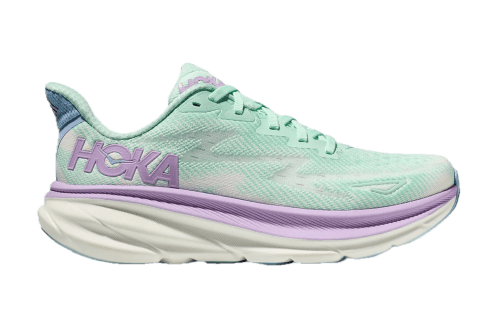
Hoka, Clifton 9 — $145.00
Best for: Walking
The Hoka Clifton 9 comes with Dr. Schottenstein’s stamp of approval—and a Seal of Acceptance from the American Podiatric Medical Association (AMPA). She is a fan of the brand’s signature MetaRocker, which steadily propels walkers forward, and the amount of cushioning in the shoe (ideal for walking on hard surfaces like pavement). A bonus: “It is also a fully mesh shoe which allows for foot expansion,” she says.
Sizes: 5-12 (with half sizes available) in regular and wide widths
Heel-to-toe drop: 5 mm
Weight: 7.3 oz
Colors: 19
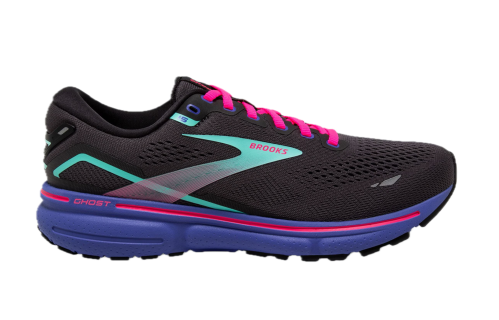
Brooks, Ghost 15 — $110.00
Originally $140, now $110
Best for: Running
“With a 12-millimeter heel-to-toe drop, this is a nice neutral, cushioned shoe,” says Dr. Lobkova—and it boasts the AMPA Seal of Acceptance. The Brooks Ghost 15 offers both support and stability, and at just a little over nine ounces in weight, it will keep you light on your feet for miles. It also comes in four width options (narrow, medium, wide, and extra wide) to accommodate most foot shapes and help ensure your perfect fit.
Sizes: 5-13 (with half sizes available) in narrow, medium, wide, and extra wide widths
Heel-to-toe drop: 12 mm
Weight: 9.1 oz
Colors: 33
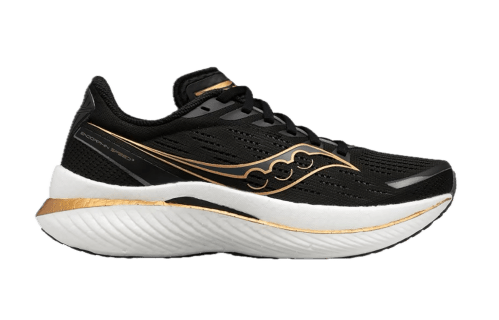
Saucony, Endorphin Speed 3 — $136.00
Originally $170, now $136
Best for: Running
No matter the weather, the Saucony is a running shoe that you can rely on. It’s made with a water-resistant upper, plus a rubber sole with traction to prevent unwanted slips and spills when running on wet surfaces. It’s also fitted with a nylon plate, which according to the brand, offers firm support without sacrificing the flexibility that is often recommended in a running shoe. However, for this reason, Dr. Lobkova recommends it for training, rather than racing.
Sizes: 5-12 (with half sizes available)
Heel-to-toe drop: 8 mm
Weight: 7.2 oz
Colors: 5
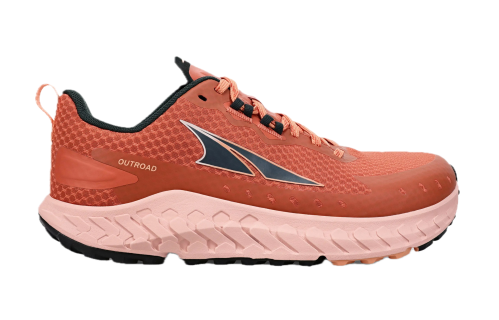
Altra, Outroad — $112.00
Originally $140, now $112
Best for: Walking
For trail runs, Dr. Lobkova recommends the Altra Outroad shoe. It has a cushy foam midsole and a supportive sole with traction for secure footing on uneven terrain. Note that it has a zero-drop heel, which lends it a lightweight, barely-there feel. (If you want more cushion, though, zero-drop shoes may not be for you.) The shoes also feature a roomy toe box and a mesh upper to keep you cool and comfortable on the trails.
Sizes: 5.5-12 (with half sizes available)
Heel-to-toe drop: 0 mm
Weight: 8.8 oz
Colors: 1
Sign up for the Well+Good SHOP Newsletter
Get exclusive deals on wellness, beauty, fitness, and food products that have been hand-picked by our editors.
Got it, you've been added to our email list.

